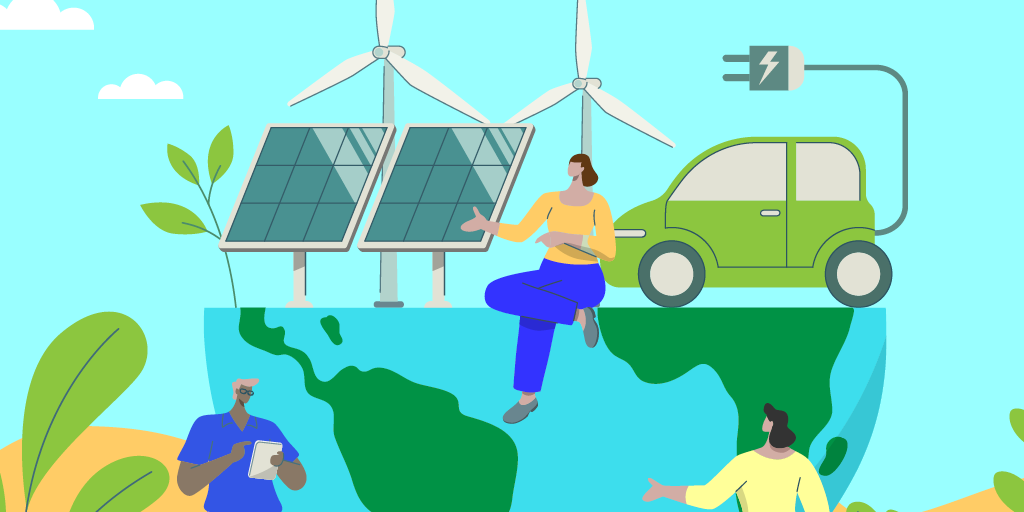Why ‘Clean Product’ Supply Chains Still Have a Long Way to Go

Following a protest by climate activists at the LA Auto Show, it’s clear that supply chains for ‘clean’ or ‘sustainable’ products still have a long way to go.
It’s hard to escape stories on the environment and climate change right now (which is probably right, to be fair!). Many companies wax lyrical about how sustainable their operations are, how environmentally conscious their supply chains are, and why their products will help consumers boost their own green credentials.
Take the Electric Vehicle industry for example. Manufacturers, advertisers and even governments promote how good these vehicles are and why people should move to them from their traditional vehicles as soon as they can. What is frequently overlooked is the environmental impact of manufacturing these vehicles and their key components.
(It’s the same for electrification in all industries, it’s just that EVs are a much more obvious target.)
Recently, climate activists from Mighty Earth and Youth Climate Strike LA staged a protest at the LA Auto Show with the aim of highlighting poor environmental practices in the industry. The protest targeted Hyundai for their reliance on coal-fired power stations, child and forced labour in its supply chain and followed a similar protest against Toyota in the days prior to the show.
It served to highlight a number of key areas of concern in these supply chains, and that there is plenty of work to still be done.
Lithium Mining and Emissions
Much of the criticism of EV supply chains focuses on mining practices associated with lithium production for batteries, poor labour practices, and the impact on global indigenous communities when it comes to extraction of key minerals.
Ambitious plans from global leaders regarding EV ownership and limiting production of petrol and diesel vehicles looks set to drive demand for lithium through the roof. Some estimates put the figure at a 40x increase between 2023 and 2040, though the shifting geopolitical landscape and impacts of production may inhibit this in the coming years.
However, it’s not just lithium that car manufacturers need to be thinking about. A report commissioned earlier in 2023 by EV giants Polestar and Rivian noted that supply chains for electric vehicles generate up to 50% more carbon emissions than those for petrol or diesel cars. The report goes on to state that unless manufacturers make significant changes, they will miss targets set out in the Paris Agreement by as much as 75%.
Labour and Social Inequality
In addition to this, supply chains have come in for further criticism of their labour practices, though this is a criticism that has persisted for many years and doesn’t solely focus on the production of EVs. However, at the forefront of concerns in this area is the shift from more traditional factory contracts to new jobs being created in battery production.
This is a challenging new area for many organisations, including big names like Ford, GM and Stellantis (formed in a merger between Fiat Chrysler and Peugeot). Workers want manufacturers to detail the likely changes of the move to EV production, but also to negotiate better contracts, including the right to unionise.
Set against a backdrop of traditional plants being closed, or staffing numbers reduced, this may well be a fight that continues for several years, and may impact another key area for manufacturers – social inequality.
Not only is this linked to worker rights, but more critically it is intrinsically linked with supply chains for key raw materials. Historically, mining for lithium, nickel and cobalt has disproportionately impacted global Indigenous Communities, with community and worker rights overlooked and the exacerbation of water shortages in regions already suffering with severe droughts.
Reducing Lithium & Collaborating with Communities
None of these issues can or will be solved overnight. It’s also worth pointing out again that EV manufacturers should not be doing this in isolation, instead working with manufacturers of other consumer goods and raw materials to ensure fully green global supply chains.
1. Reduce Mineral Use – Recycling
There are few organisations or countries that have a robust process in place for the recycling of EV batteries. China is currently ahead of the pack, but there is more that everyone could be doing. By building better programs, this will allow for the reuse of core materials and reduce the need for new mines.
2. Reduce Mineral Use – Public Transport
Manufacturers are choosing to focus on electrification of private cars, though many world cities are beginning to electrify buses and other mass transportation. Countries and cities could use this as an opportunity to redesign their public transport systems, reducing reliance on private cars and therefore reducing the use of minerals in the same volume.
3. Work with Communities
This is a broad assessment, though as we have stated previously, it needs to be with the Indigenous Communities who are impacted by mineral extraction or raw material production. Civil, civic and Indigenous rights must be provided and then adhered to by all parties, with heavy penalties for organisations whose supply chains transgress.
4. Be the Leaders
To come full circle, big names currently in the spotlight for protests like Hyundai and Toyota, whose environmental performance in the past has been mixed at best, must now take the lead on greening their supply chains properly. If large manufacturers and leading global organisations take the lead, then others will follow the example and enforcement will be much easier.In addition, Governments need to take the lead too in reducing reliance on fossil fuels, using events like COP28 for effective outcomes, rather than political greenwashing. Fossil fuel exporters need to be fully integrated into the process or it can never succeed.